This article was published as part of the Data Science Blogathon.
Introduction
Decentralized Applications (dapps) are applications built on a blockchain. A decentralized application can be of many types such as an NFT marketplace, or a decentralized exchange (DEX). Using a DEX, users are not required to deposit their assets on the exchange (whereas in a centralized exchange, users deposit their assets on the exchange). Due to this, users have complete control of their assets. Thus, decentralization puts the power in the hands of the people.
In this guide, we will go through how to use QuickSwap, a decentralized application built on Polygon that allows users to swap, farm, and stake in a decentralized, secure, and low-cost manner.
What is QuickSwap?
QuickSwap is a decentralized application built on the Polygon blockchain. It is a layer-2 DEX (Decentralized Exchange) and AMM (Automated Market Maker). QuickSwap is the second largest decentralized application on the Polygon blockchain having ~$250m of assets in TVL (Total Value Locked). QuickSwap offers features such as swapping, liquidity, yield farming, and much more.
.png)
QuickSwap allows users to earn additional rewards for adding liquidity to the platform. Once users stake their LP tokens, they earn LP rewards in addition to the additional rewards in the form of $QUICK tokens (QuickSwap’s native token).
To execute any transaction on a decentralized application, some fees are associated with it. This fee is paid in the native token of the underlying blockchain. Since QuickSwap is built on the Polygon blockchain, users must pay gas fees in $MATIC tokens.
To head to QuickSwap, click here.
Wallet Used in QuickSwap
QuickSwap supports multiple Web3 wallets. In this guide to QuickSwap, I will be using the MetaMask wallet. Since QuickSwap is built on the Polygon blockchain, your MetaMask should be connected to the Polygon blockchain.

MetaMask is a Web3 crypto wallet that enables users to store, send, receive, buy and swap their crypto assets in a secure and decentralized way.
To know how to add the Polygon blockchain to your MetaMask click here.
Connect MetaMask to QuickSwap
To interact with any decentralized application, we first have to connect our wallet to the application. You can do so by following the steps below:
- On the QuickSwap homepage, click on the Connect Wallet button.
- Select the wallet you want to connect the dapp with.
- Select which account of your wallet you want to connect QuickSwap to.
- Click on Next.
- Click on Connect.
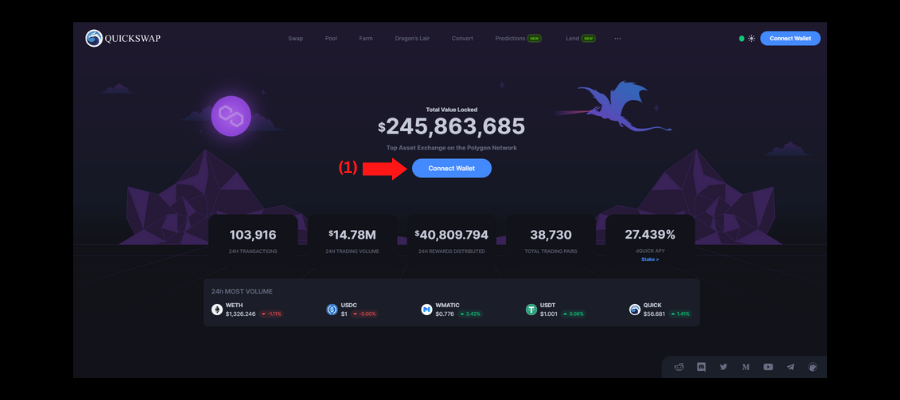
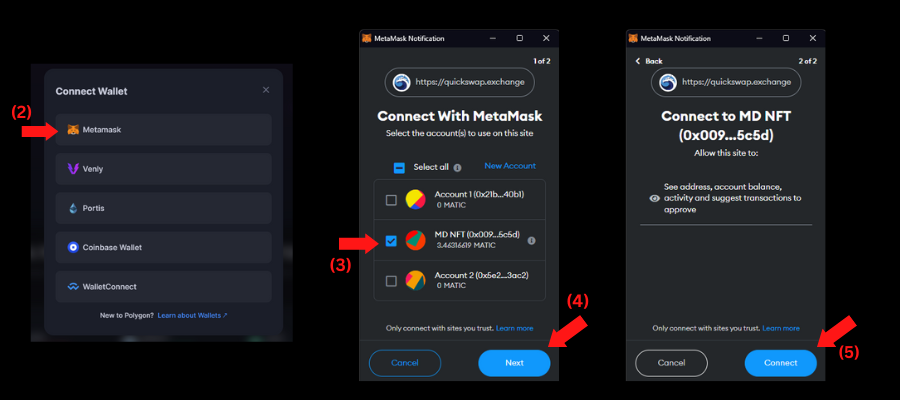
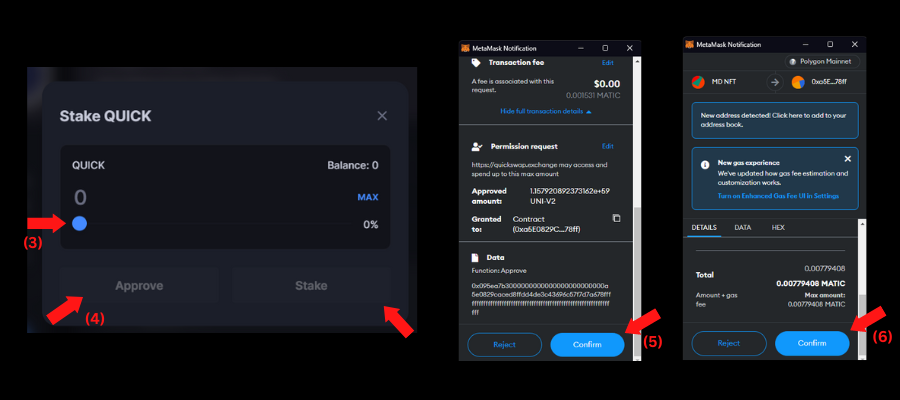
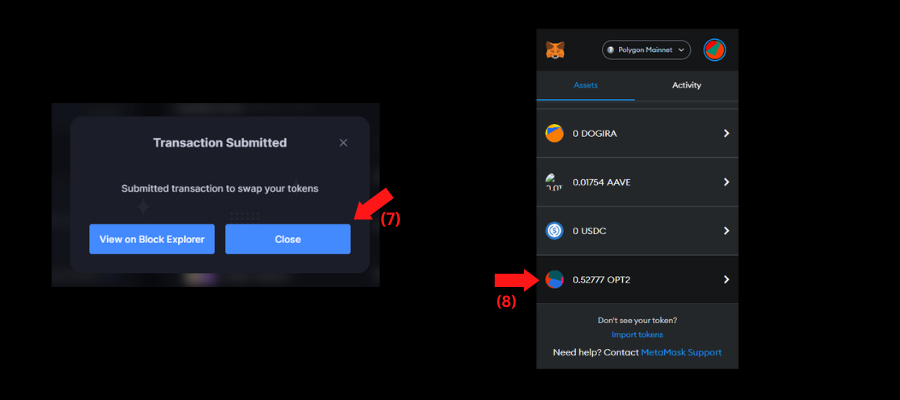
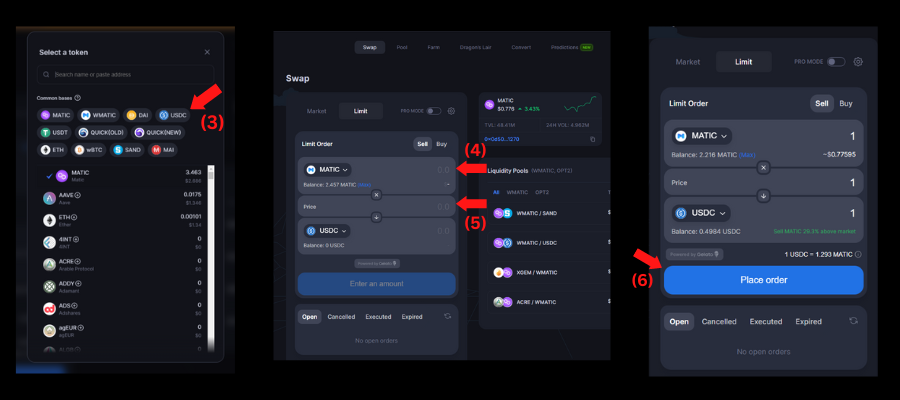
Your wallet is now connected to the application. Hence you can start interacting with the dapp. Once your wallet has been connected, it will direct you to the swap page.
What is Swapping?
Swapping is exchanging (trading) one asset for the other without the need for an intermediary. Intermediaries refer to as middlemen. When we want to exchange crypto on a centralized exchange, the exchange acts as the middleman between the buyer and seller. On a decentralized exchange such as QuickSwap, there’s no middleman required.
QuickSwap allows two kinds of swapping – Swap and Limit Swap.
Swap
In this method, assets get swapped (exchanged) at the current market price. To swap your tokens, follow the steps below:
- On the Swap page, click on the Select a token button.
- Select the token you want to swap.
- Enter the amount of the token you want to swap.
- Click on the Swap button.
- Click on Confirm Swap.
- In your wallet, confirm the transaction by clicking on the Confirm button.
- Click on Close.
- The token you have swapped is now reflected in your wallet.
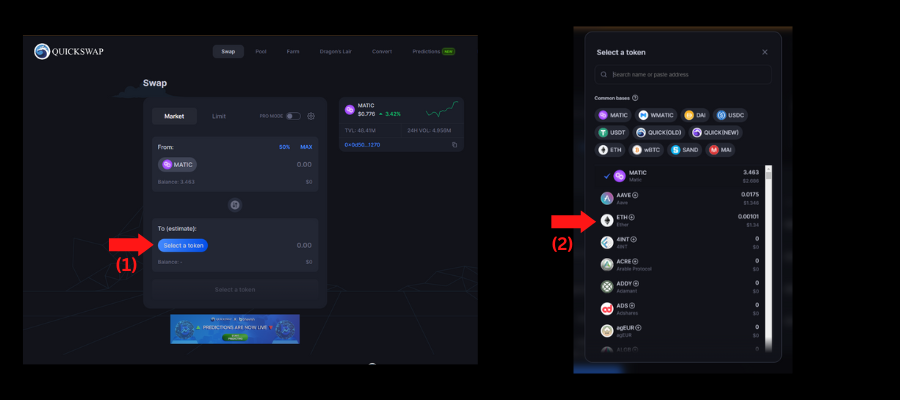
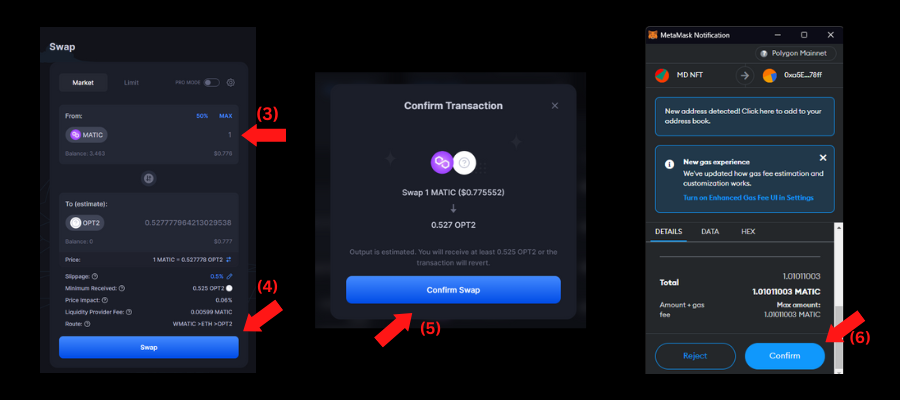
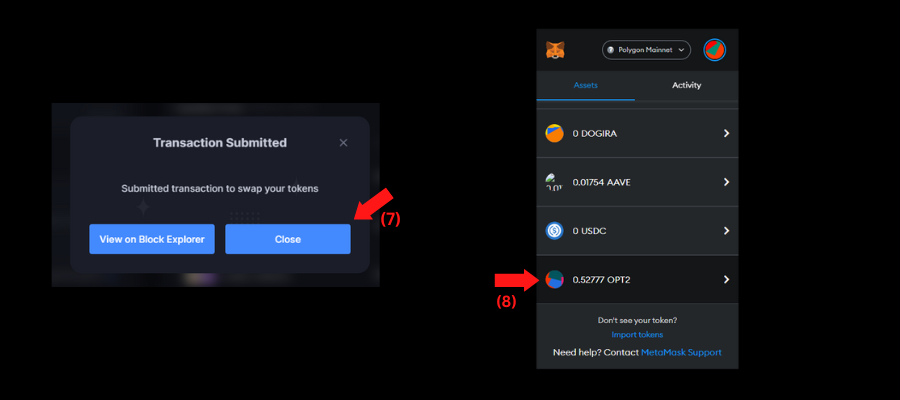
Limit Swap
In a limit swap, users can specify the price at which you want their asset to be swapped. For example, the current price of MATIC = $1. In a limit swap, you may set the limit amount as $0.50. This means the assets will get swapped (traded) only when the price of MATIC = $0.5.
To swap your tokens using the limit feature, follow the steps below:
- On the Swap page, click on the Limit section.
- Click on the Select a token button.
- Select the token you want to swap.
- Enter the amount of the token you want to swap.
- Enter the price at which you want the transaction to take place.
- Click on the Place Order button.
- Click on Confirm Order.
- In your wallet, confirm the transaction by clicking on the Confirm button.
- Click on Close.
- Scroll down and in the Open section, you will see your open orders.
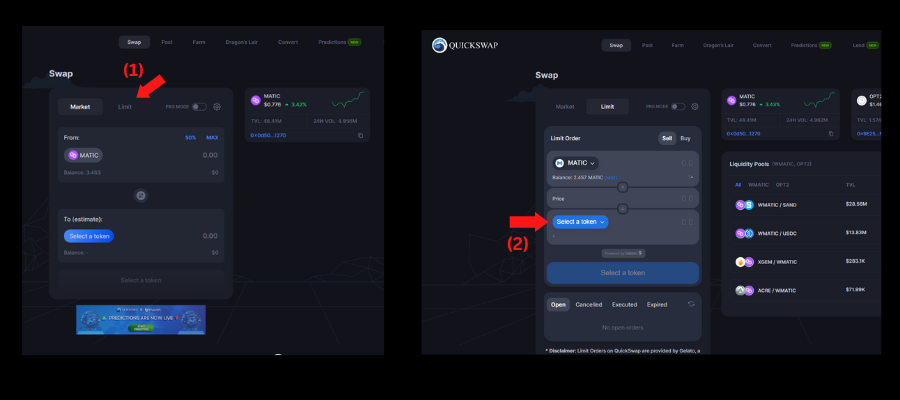
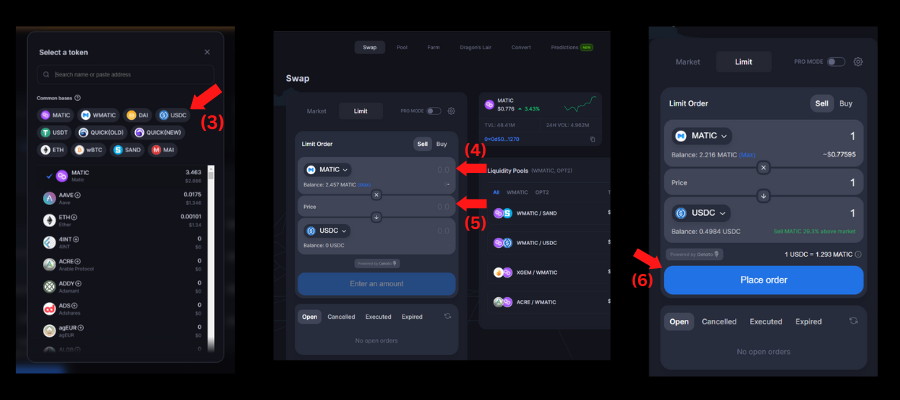
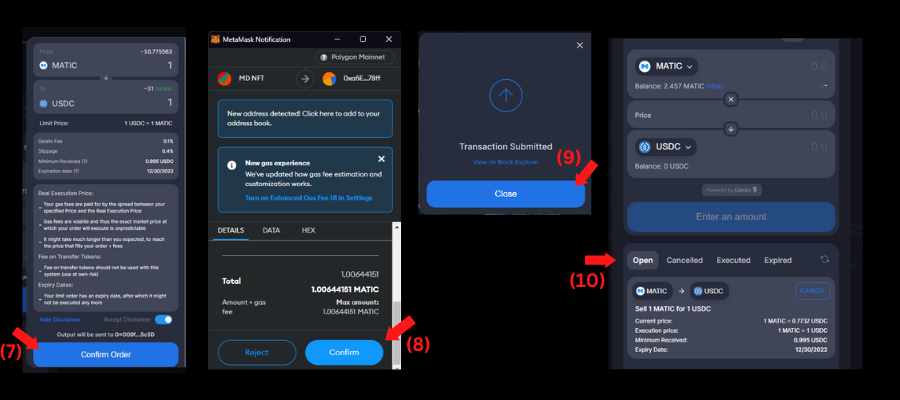
Your order will be executed when your specified asset’s price is met.
Cancel Limit Order
In the above section, we saw how to set a limit order. In this section, we will see how to cancel the order which we have already placed.
You can cancel a limit order by following the steps below:
- In the Open section, click on the Cancel button.
- Click on Cancel Order.
- In your wallet, confirm the transaction by clicking on the Confirm button.
- You can notice the open section is now empty, signifying there are no current open orders.
- Click on the Canceled section.
- Here you can see the past orders which you have canceled.
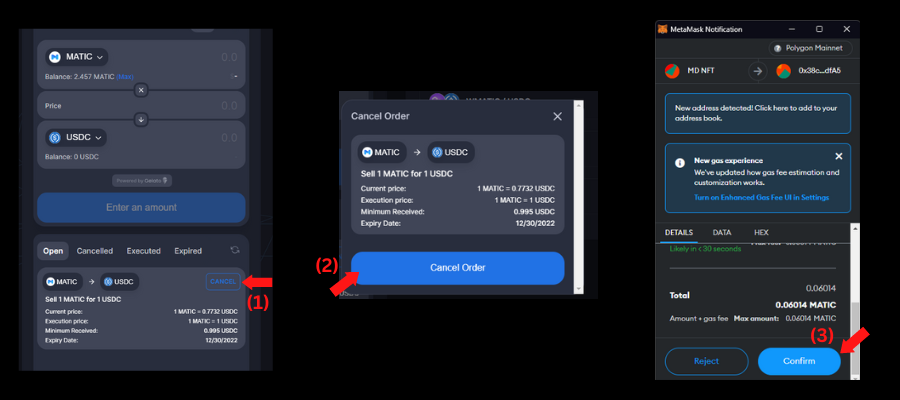
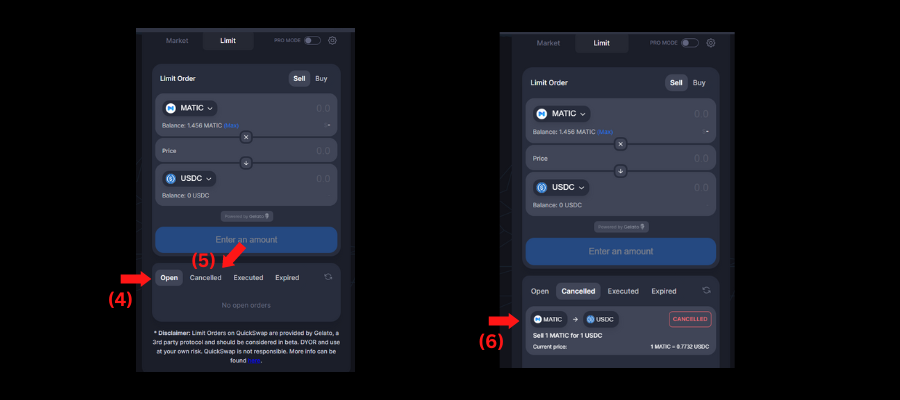
Bonus Tip!
In the Swap section, you must have seen a Pro Mode slider. The pro mode section will show you the market depth of the current asset pair you want to swap.
You can enable the pro mode by following the steps below:
- Click on the Pro Mode slider.
- You can now see the price chart of the respective asset pairs.
- Furthermore, you can also view the market depth of the respective asset pair.
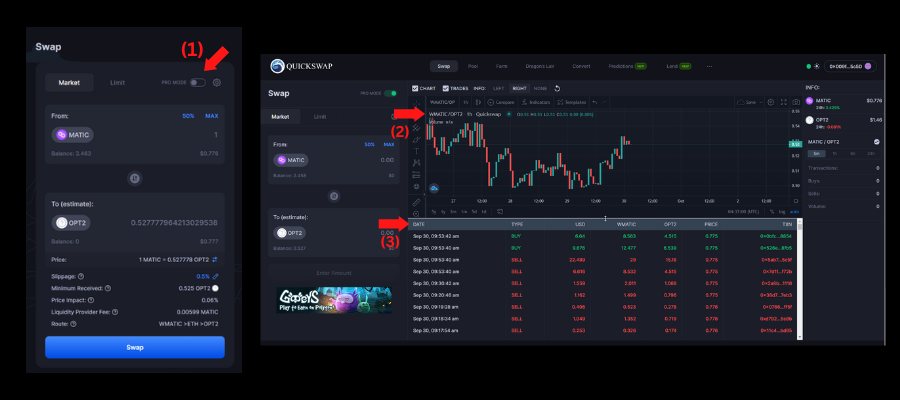
Liquidity
Liquidity refers to adding funds to the protocol. Orders will easily get executed on protocols that have high liquidity. With QuickSwap, as specified above, users can earn additional rewards in the form of $QUICK tokens for staking their LP tokens. By adding liquidity, users earn fees equal to the pool’s share.
To add liquidity, you are required to add liquidity for two tokens. The amount of these two tokens is required to be in a 50-50 weightage. For example, if you are adding liquidity for the USDC/USDT pair, you are required to add equal amounts of USDT and USDC since they are of the same price i.e. $1.
Pool
In the pool section, you will receive LP tokens as proof that you have added liquidity to the protocol.
Add Liquidity
To add liquidity (get LP tokens), follow the steps below:
- To navigate to the pool page, click on Pool in the navbar.
- Click on the tokens icon to change the token.
- Select the tokens to which you want to add liquidity.
- Before adding liquidity, you must approve both the selected tokens in your wallet. Click on the Approve button for each of the tokens.
- Approve the transaction in your wallet for each token by clicking the Confirm button (This step will be done twice as we approve the transaction for two tokens).
- Once approved, click on the Supply button.
- Click on Confirm Supply.
- In your wallet, confirm the transaction by clicking on the Confirm button.
- Click on Close.
- You have successfully added liquidity to the respective two token pairs.
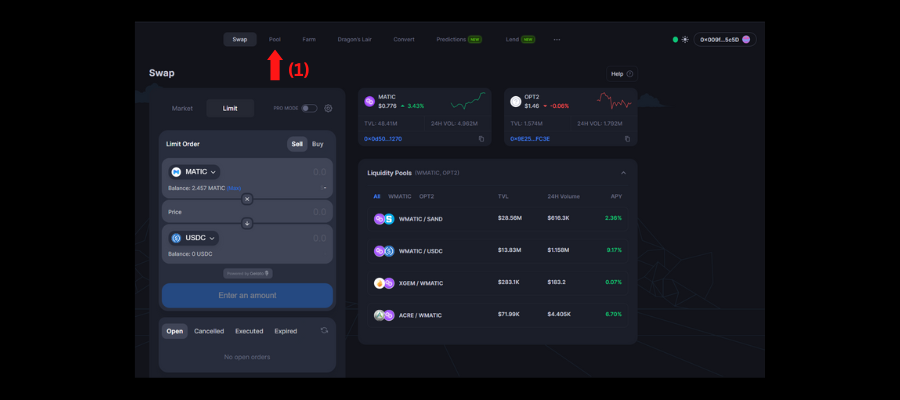
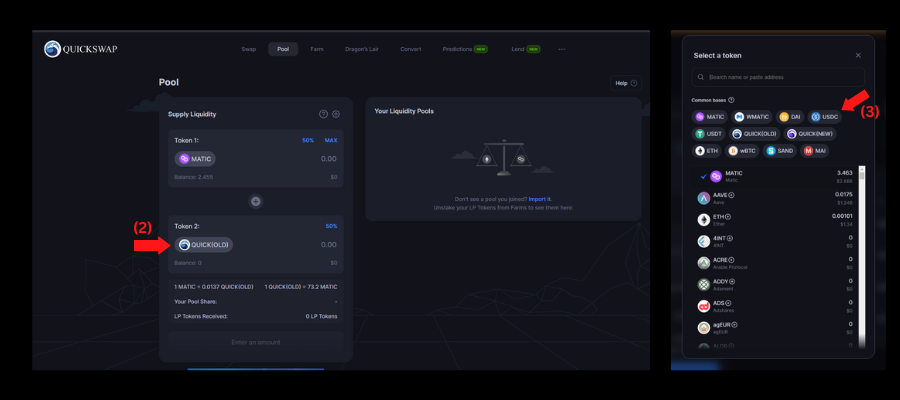


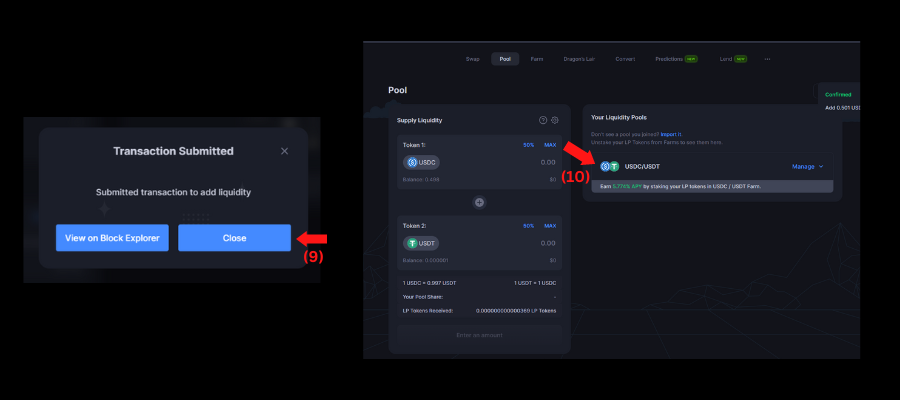
After providing liquidity, the LP tokens will be reflected in your wallet.
Remove Liquidity
To remove liquidity (sell LP tokens), follow the steps below:
- In Your Liquidity Pools section, click on the drop-down arrow near Manage.
- Click on the Remove button.
- Adjust the slider depending on the amount of liquidity you want to remove.
- Click on Approve to allow the smart contract to interact with your wallet.
- Click on the Confirm button in your wallet.
- Once approved, click on the Remove button.
- In your wallet, confirm the transaction by clicking on the Confirm button.
- Click on Close.
- You will notice both the tokens which you added as liquidity to the protocol have been credited back to your wallet.
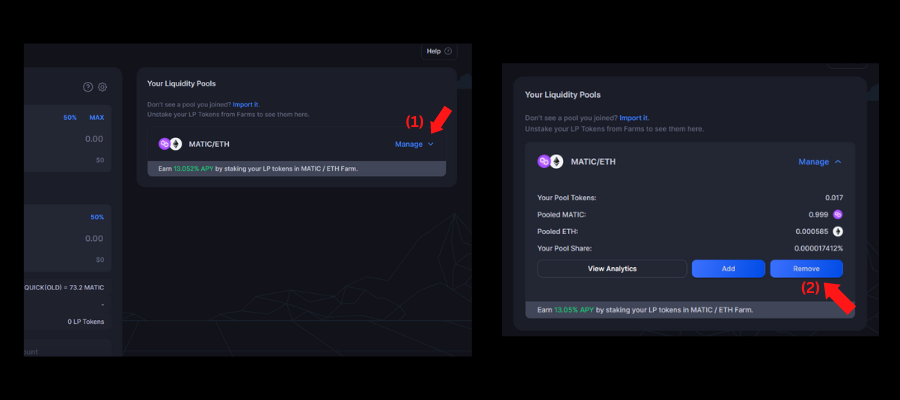
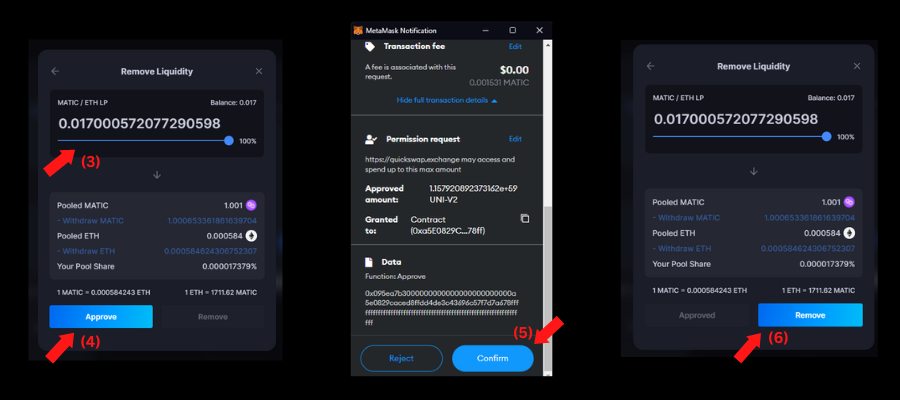
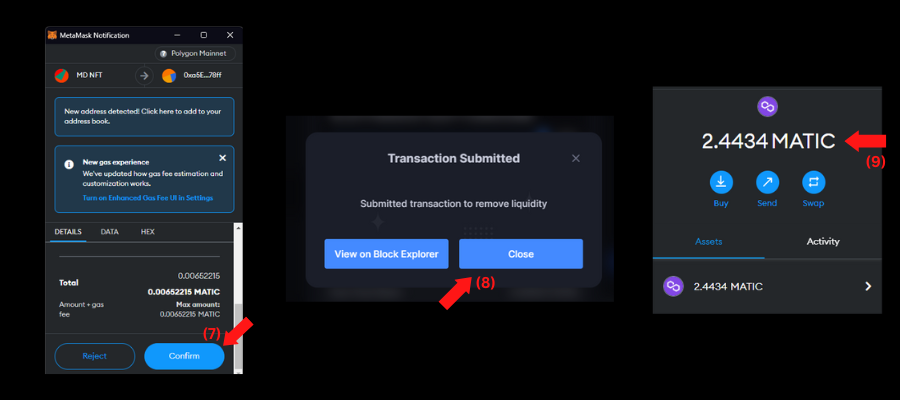
Farm
In the farm section, your LP tokens can be put to use. Users can earn additional yield by staking their LP tokens. This yield is variable as it depends on the supply and demand of the underlying tokens.
How to Stake LP tokens?
Users can farm their LP tokens by following the steps below:
- To navigate to the farm page, click on Farm in the navbar.
- This is the farm page.
- Select the pool with the same token pair as your LP tokens.
- Enter the amount of LP tokens you want to stake.
- Click on Approve to allow the smart contract to interact with your wallet.
- Click on the Confirm button in your wallet.
- Once approved, click on the Stake LP tokens button.
- In your wallet, confirm the transaction by clicking on the Confirm button.
- The additional rewards for staking the LP tokens can be claimed by clicking on the Claim button.
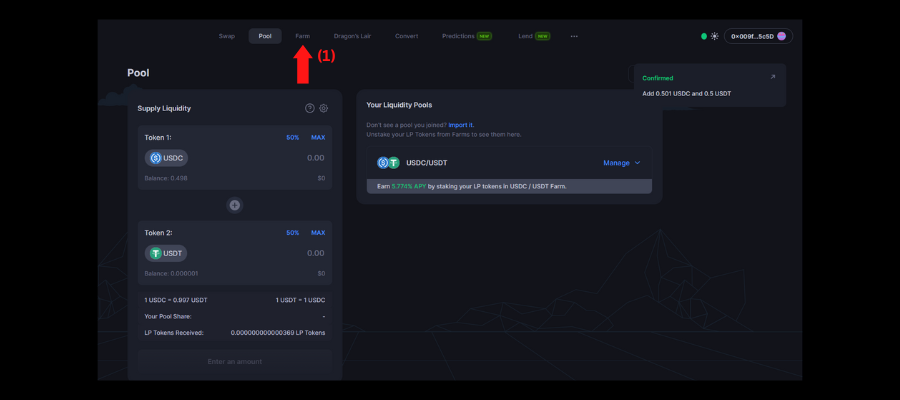
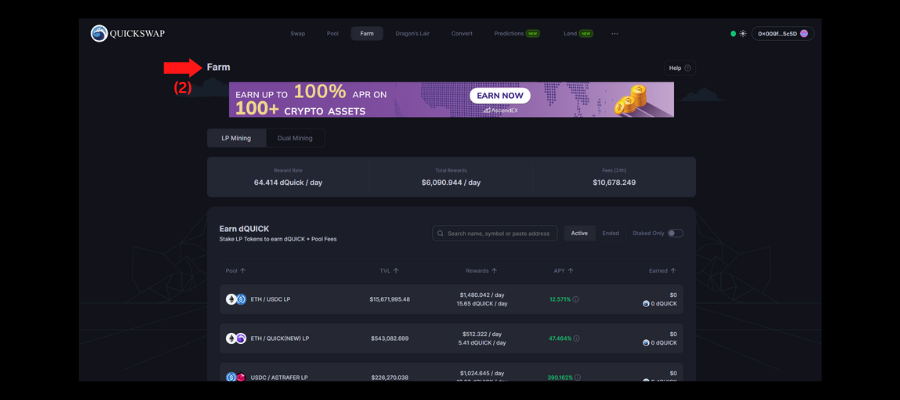


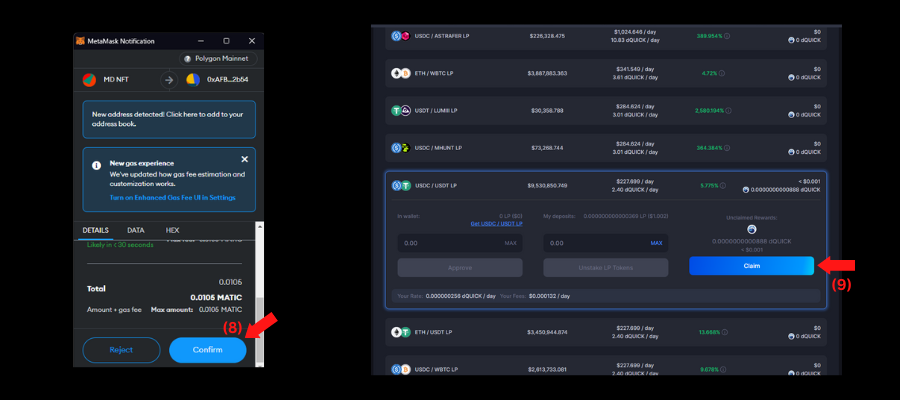
Your LP tokens are now staked and are earning interest.
How to Unstack LP tokens?
Users can unstack their staked LP tokens by following the steps below:
- To navigate to the farm page, click on Farm in the navbar.
- Select the pool with the same token pair as your LP tokens.
- Enter the amount of LP tokens you want to unstack.
- Click on the Unstake LP tokens button.
- In your wallet, confirm the transaction by clicking on the Confirm button.
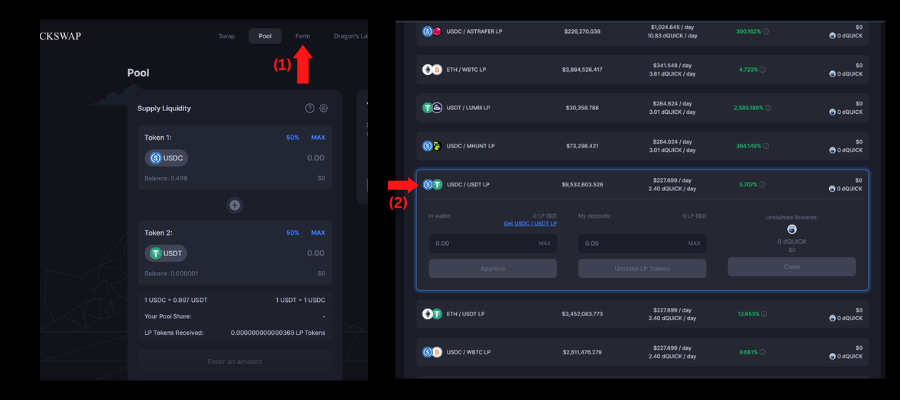
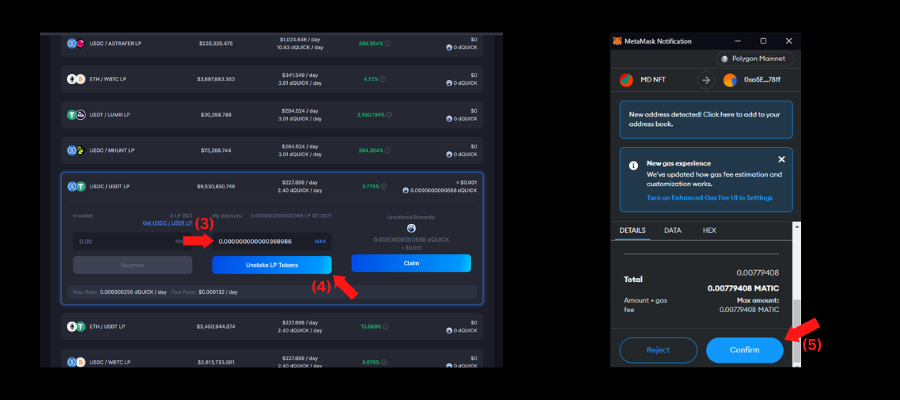
Your LP tokens are now unstacked from the pool.
Dragon’s Lair
In the Dragon’s lair section, users can earn a good yield in the form of $QUICK tokens by staking their $QUICK tokens. The APY for staking $QUICK is 27%.
You can stake $QUICK tokens and earn interest by following the steps below:
- To navigate the Dragon’s lair page, click on Dragon’s Lair in the navbar.
- To stake $QUICK tokens, click on the Stake button.
- Enter the amount of $QUICK tokens you wish to stake.
- Click on Approve to allow the smart contract to interact with your wallet.
- Click on the Confirm button in your wallet.
- Once approved, click on the Stake button.
- In your wallet, confirm the transaction by clicking on the Confirm button.
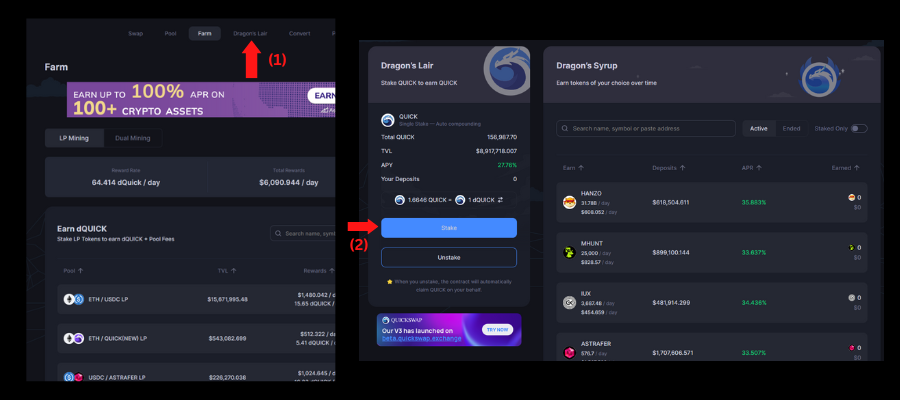
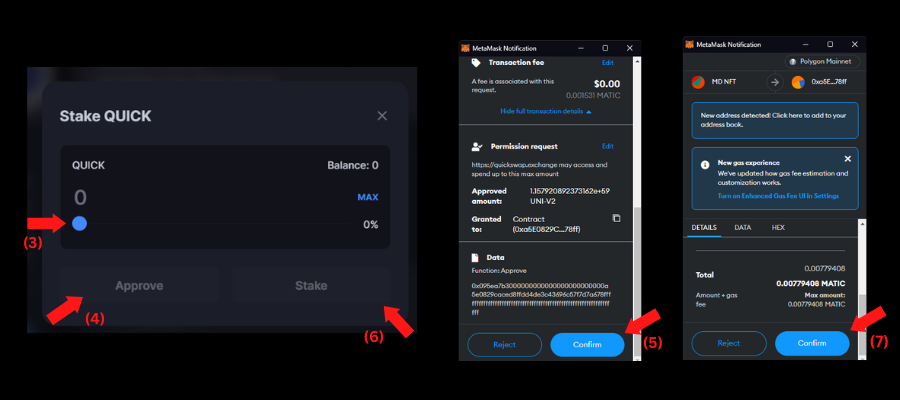
Your $QUICK tokens have now been staked and are earning yield.
Convert
Initially, the $QUICK token had a maximum supply of 1 million tokens. The community decided to change this and voted for a 1:10000 token split to make $QUICK more appealing. The total supply of the new $QUICK token is 1 billion tokens.
In the convert section, users can convert their old $QUICK tokens for the new $QUICK tokens. Due to the split, 1 QUICK(OLD) = 1000 QUICK(NEW).
To convert your old $QUICK tokens to the new $QUICK tokens, follow the steps below:
- Navigate to the Convert page by clicking on Convert in the navbar.
- Enter the amount of old $QUICK tokens you have.
- Approve the transaction by clicking on the Approve button (I do not have old $QUICK tokens; hence I will explain the further steps with the help of a flowchart.).
- Click on the Confirm button in your wallet.
- Once approved, click on the Convert button on the Convert page of QuickSwap.
- In your wallet, confirm the transaction by clicking on the Confirm button.
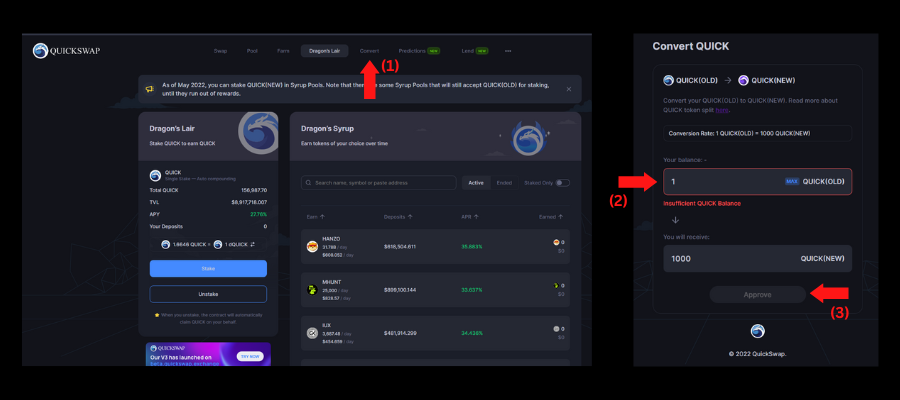
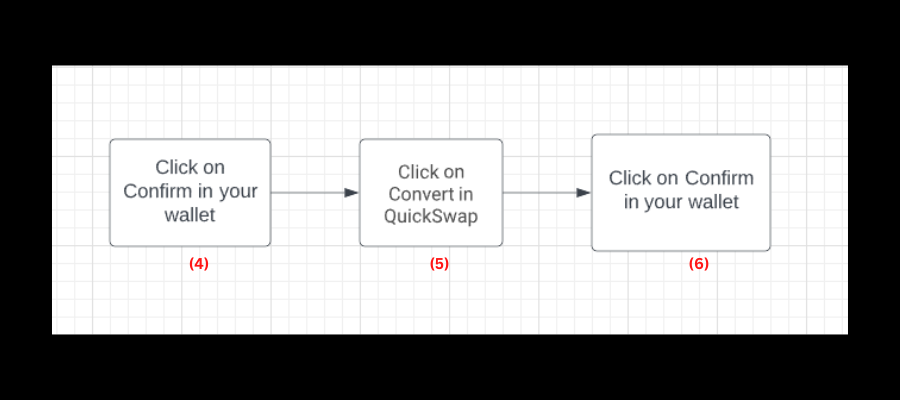
Your old $QUICK tokens are now converted to new $QUICK tokens.
Conclusion
Voila, you now know how to use a decentralised application (dapp) on Polygon. A decentralised exchange may have associated risks; therefore, please conduct intensive research before connecting your wallet to any dapp. Avoid investing in something too good to be true.
Some tokens promise returns having huge numbers (APR /APY>1000). Avoid investing or staking tokens in these kinds of tokens. These tokens may become schemes, and the token’s price may eventually go to zero.
All the content in this article is purely for educational purposes and does NOT provide any financial advice. If you have enjoyed this guide, please let me know in the comments and consider following. Thank you for your time.
Key Takeaways
- QuickSwap is a DEX built on the Polygon blockchain.
- Users can earn additional yield for staking their LP tokens on QuickSwap.
- QuickSwap offers features such as swapping, liquidity, yield farming, and much more.
- Avoid investing in something too good to be true.
- Make sure the link of the dapp is correct. To ensure this, head to the official social media accounts of the protocol and use the links from there.
- NO content in this guide provides any kind of Financial advice.
The media shown in this article is not owned by Analytics Vidhya and is used at the Author’s discretion.





